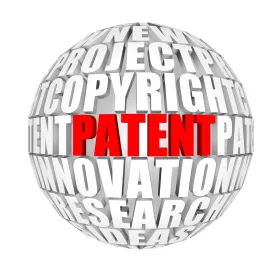The U.S. Federal Trade Commission issued its much anticipated study on patent assertion entities (“PAEs”) on October 6, 2016. The report, entitled Patent Assertion Entity Activity: an FTC Study, defines a PAE as “a firm that primarily acquires patents and seeks to generate revenue by asserting them against accused infringers.” The report highlights the business practices of PAEs (based on non-public data from 2009 to 2014) and includes recommendations for patent litigation reform. FTC Chairwoman Edith Ramirez praised the report for providing “an empirical foundation for ongoing policy discussions,” and said that the report’s recommendations “are designed to balance the needs of patent holders with the goal of reducing nuisance litigation.” The report provides valuable insights into a key area of intersection between the antitrust and patent laws and proposes concrete reforms that seek to balance the benefits of legitimate infringement litigation against the harms of nuisance suits.
Study Findings
The report identified two types of PAEs using distinctly different business models: “Portfolio PAEs” and “Litigation PAEs.” Portfolio PAEs, the FTC found, were strongly capitalized and purchased patents outright. They negotiated broad licenses, often covering hundreds or thousands of patents, frequently without first suing the alleged infringer. These licenses typically netted more than $1 million in fees and royalties. Litigation PAEs, on the other hand, frequently relied on revenue sharing agreements to acquire patents. They overwhelmingly filed infringement lawsuits before securing licenses. The licenses secured by Litigation PAEs covered a small number of patents and generally yielded total royalties of less than $300,000. The low royalty amounts indicated to the FTC that Litigation PAEs’ behavior was consistent with nuisance litigation.
While Portfolio PAEs generated the overwhelming majority of licensing revenue, Litigation PAEs were found to be the far more common type of PAE and generated almost all of the litigation. According to the study, Portfolio PAEs generated licensing revenues of $3.2 billion, which accounted for approximately 80% of reported revenue. Litigation PAEs generated only about $800 million in licensing revenue, yet they accounted for 96% of all patent infringement lawsuits covered by the study. The report also found that 93% of the patent licensing agreements held by Litigation PAEs resulted from litigation, while for Portfolio PAEs that figure was only 29%.
The report examined the types of patents held by PAEs and found that 88% were in the information and communications technology (“ICT”) sectors, and more than 75% of those patents were software-related patents. Although PAEs overwhelmingly held ICT and software patents, they asserted those patents against firms in a broad range of industries. The study noted in particular that PAEs frequently targeted members of the “Retail Trade,” which includes both store retailers that operate fixed point-of-sale operations and non-store retailers, such as Internet merchants that directly sell products. Since most of the patents asserted by PAEs were ICT patents, the presence of retailers among the targets of assertion activity suggests that PAEs asserted their patents against both manufacturers of the accused products and end-users.
The report also considered whether PAEs were able to make money by mass-mailing so-called “demand letters”; however, the FTC observed an “absence of large demand letter campaigns for low-revenue licenses among the Study PAEs.”
To gain a better understanding of how PAE behavior compares with the behavior of other firms asserting patents, the report looked at the wireless chipset sector, examining how reported PAE assertion behavior compared to certain manufacturers and non-practicing entities (NPEs) (who primarily seek to develop and transfer technology). For this study, the FTC obtained non-public data from eight manufacturers and five NPEs.
The wireless case study found that Litigation PAEs and manufacturers behaved differently. Within the study, Litigation PAEs brought far more infringement lawsuits involving wireless patents—nearly two-and-a-half times as many as manufacturers, NPEs, and Portfolio PAEs combined. Litigation PAE licenses involved simple lump-sum payments with few restrictions, if any, whereas the reported manufacturer licenses frequently included field-of-use restrictions, cross-licenses, and complicated payment terms.
Recommendations for Legislative and Judicial Reform
The FTC’s report recommends legislative and judicial reforms that seek to balance the benefits of legitimate infringement litigation against the harms of nuisance patent litigation (i.e., cases where the defendant settles in order to avoid the cost of litigation despite the weakness of the plaintiff’s case on the merits). On the one hand, the FTC recognizes that infringement litigation can play an important role in protecting patent rights. On the other hand, nuisance litigation can tax judicial resources and harm competition by increasing the costs of innovation and hindering or inhibiting market entry by start-ups and small firms.
Seeking to balance the benefits of legitimate infringement litigation against the harms of nuisance suits, the FTC proposes reforms to:
-
Address the imbalances between the cost of litigation discovery for PAE plaintiffs and defendants;
-
Provide the courts and defendants with more information about the plaintiffs that have filed infringement lawsuits;
-
Streamline multiple cases brought against defendants on the same theories of infringement; and
-
Provide sufficient notice of these infringement theories as courts continue to develop heightened pleading requirements for patent cases.
Analysis
The FTC’s report confirms and provides empirical support for much of the anecdotal evidence already known by entities that have dealt with PAEs. But what impact the report may have on the PAEs’ business models and litigation tactics, if any, remains to be seen.
The report raises a number of proposed reforms worthy of further discussion. For example, to address the discovery burden and cost asymmetries in PAE litigation, the FTC proposes amending the Federal Rules of Civil Procedure to require early disclosure of asserted claims and infringement and invalidity contentions. The report also advocates for measures that would limit discovery before preliminary motions and provisions to ensure that such motions are decided in a timely manner. The FTC also urges courts to require more particularity in complaints brought by PAEs so that defendants can have sufficient information to evaluate the nature and scope of their alleged infringement. The FTC’s recommendations are largely in line with legislation introduced in both the House and Senate, but that stalled in recent months. The success of similar proposals in the future will depend heavily on the efforts of the FTC and other interested parties to effect change in the patent litigation landscape.
It will also be interesting to see if the report leads to stepped up antitrust and false claims enforcement efforts against PAEs by the FTC. To date, the FTC has brought only one enforcement action against a PAE. In 2014, the FTC charged a PAE with sending false and deceptive letters to thousands of businesses around the United States in an attempt to sell licenses to its patents. According to the complaint, the letters falsely claimed that many other companies had already agreed to pay thousands of dollars for licenses and that the PAE would sue recipients of the letters if they did not respond. The PAE settled the FTC’s charges by agreeing not to make similar deceptive representations when asserting patent rights. Businesses will be watching to see if the FTC uses its findings from the report to bring more cases against PAEs, particularly cases not involving outright deception.
Similarly, it is an open question whether the report will lead private parties to consider antitrust claims against PAEs, which may help to even the imbalance in litigation burdens. Although the report spotlights some potential competitive harms of PAE activity, antitrust claimants would still have to establish all of the elements of an antitrust claim and defeat potential immunity defenses.






 />i
/>i
